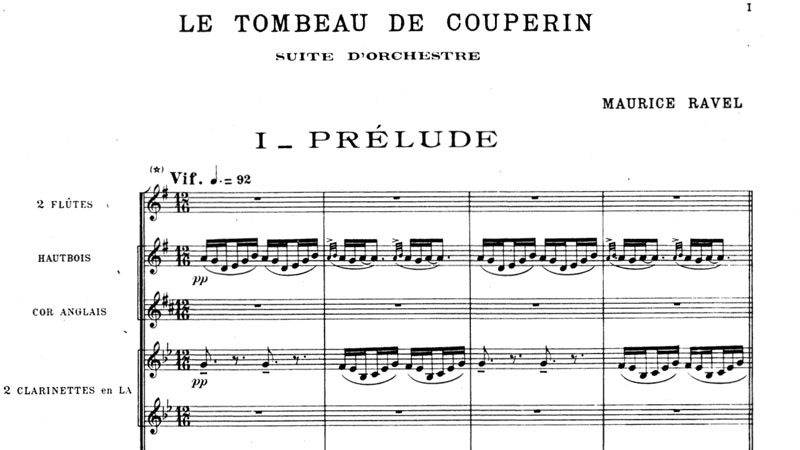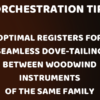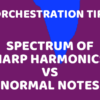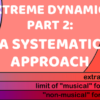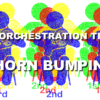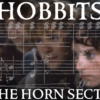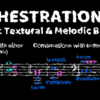A great orchestral theme should use certain precepts of communication for maximum emotional impact.
Yesterday I spoke about the importance of shaping a phrase orchestrally to fit the appropriate instrument. Today’s topic takes this further – not merely shaping a phrase or musical sentence, but an entire theme that’s more like a paragraph – composed of several distinct phrases.
I highly recommend a specific study of thematic exposition to complement your daily score-reading (you’re score-reading every day, right?). Select works that are paragons of melodicism – grand opera, romantic symphonies, piano concertos, etc. Listen to the first entrance of the main theme for an act, section, or movement. How does it fit its instrumentation? What kind of scope for development does it represent? How does it push at the possibilities of the orchestration?
Now break it down. What is the overall harmonic structure, and how does that effect the progression of the theme? What methods are used to push the emotional contours, and what is the overall melodic arc? How does the composer get there? You see here that a great orchestral composer can’t just be well-versed in orchestration, harmony, and counterpoint – putting those things together must infer a degree of calculation mixed with inspiration.
Let’s return to the metaphor of melody with grammar. In some sense, a paragraph is a kind of argument. It starts with a proposition and ends with a conclusion. That is the way our ape-like brains work – in some way, all communication is an extension of our curiosity. We want our interest to be captured, then enlightened, and then satisfied. Usually, this is a process so natural to us that we barely if ever notice that it’s essentially creative – we invent what to say next all the time, from the obvious to the subtle, from the plain truth to a bald-faced lie. Occasionally, we allow someone to go on and on about something, because they’ve got something very involved to say, and/or they are a great storyteller. Eventually people started writing stuff down, and we ended up being a literate culture, with rules about verbal and textual construction.
That is a direct parallel to being a composer. We have our own specific genre of noise-making, but it’s still essentially communication. The audience that we are speaking to is motivated by all the same things as an avid reader. But more than just having the same basic expectations, the form in which those expectations are provoked and fulfilled is universal, I feel.
So first shape your phrases to the instruments. Forge those initial phrases into a proposition, a suggestion, an insinuation. Then take it further – inform that phrase with an emotional arc. Give it someplace to go, whether it’s conflict, or anticipation, or a reversal of expectations. Don’t screw around – if you’ve got our attention, then prove you deserve it by holding onto it. Then resolve that arc, or don’t – the beauty of communication and storytelling is that it’s as flexible and various as the life that inspires retelling. You can bring things to a crashing finish, or a dignified conclusion, or a momentary pause, or a bridge to another idea.
Now forget about the meaning of what I just wrote, and read that last paragraph again, this time looking at its shape. Observe how the idea is introduced, developed, and concluded. That’s what I’m talking about right there. That is a self-contained theme within the structure of a paragraph – just as this paragraph itself serves as a coda – an afterthought which drives the point home with the same determination as the last few pages of a finale.
The Russians were masters of this kind of thematic exposition, especially Tchaikovsky. In the excerpt below from the 1st violin part of his first piano concerto, the strings make the first complete thematic statement, the type of extended, sweeping melody that was germinal for future composers like Scriabin, Rachmaninov, and Prokofiev. Score-read this movement, and other late Romantic-era works, and analyze their structure, asking the questions above. In this example, note how the composer matches the point of stress in each phrase to the peak of the melodic arc. That is an element of Tchaikovsky’s style that was highly criticized as being too obvious, though admittedly it also contributed to his eventual public success. Also, watch how he recycles a small gesture over the course of the long passage. The interest derives from the placement of that phrase in different harmonic and thematic context – actually descending bit by bit at first, only to hook back at the end of the first half of the exposition. The second half is a more deliberate development, and soars to predictable heights before stepping down dramatically. Essentially it’s two paragraphs describing the same idea.

